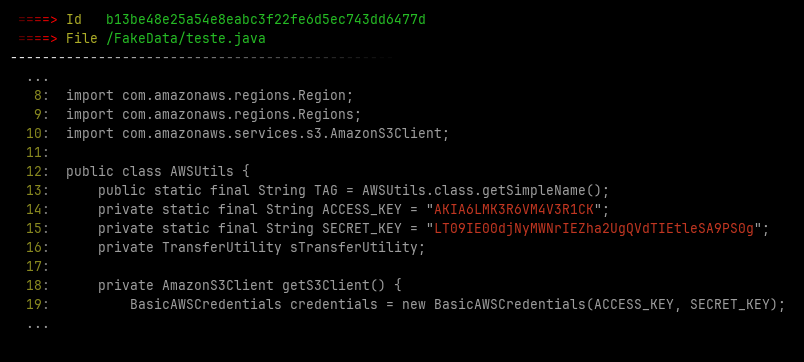File Crawler







FileCrawler officially supports Python 3.8+.
Main features
Parsers:
Indexers:
Alert:
IntelX Parser
Motivated by several reasons I decided to move IntelX specific rules to a new tool called IntelParser available at https://github.com/helviojunior/intelparser/
Sample outputs
In additional File Crawler save some images with the found leaked credentials at ~/.filecrawler/ directory like the images bellow




Installing
Dependencies
apt install default-jre default-jdk libmagic-dev git
Installing FileCrawler
Installing from last release
pip install -U filecrawler
Installing development package
pip install -i https://test.pypi.org/simple/ FileCrawler
Running
Config file
Create a sample config file with default parameters
filecrawler --create-config -v
Edit the configuration file config.yml with your desired parameters
Note: You must adjust the Elasticsearch URL parameter before continue
Run
filecrawler --index-name filecrawler --path /mnt/client_files -T 30 -v --elastic
filecrawler --index-name filecrawler --path /mnt/client_files -T 30 -v --local -o /home/out_test
Help
$ filecrawler -h
File Crawler v0.1.3 by Helvio Junior
File Crawler index files and search hard-coded credentials.
https://github.com/helviojunior/filecrawler
usage:
filecrawler module [flags]
Available Integration Modules:
--elastic Integrate to elasticsearch
--local Save leaks locally
Global Flags:
--index-name [index name] Crawler name
--path [folder path] Folder path to be indexed
--config [config file] Configuration file. (default: ./fileindex.yml)
--db [sqlite file] Filename to save status of indexed files. (default: ~/.filecrawler/{index_name}/indexer.db)
-T [tasks] number of connects in parallel (per host, default: 16)
--create-config Create config sample
--clear-session Clear old file status and reindex all files
-h, --help show help message and exit
-v Specify verbosity level (default: 0). Example: -v, -vv, -vvv
Use "filecrawler [module] --help" for more information about a command.
How-to install ELK from scratch
Installing Elasticsearch
Docker Support
Build filecrawler only:
$ docker build --no-cache -t "filecrawler:client" https://github.com/helviojunior/filecrawler.git
Using Filecrawler's image:
Goes to path to be indexed and run the commands bellow
$ mkdir -p $HOME/.filecrawler/
$ docker run -v "$HOME/.filecrawler/":/u01/ -v "$PWD":/u02/ --rm -it "filecrawler:client" --create-config -v
$ docker run -v "$HOME/.filecrawler/":/u01/ -v "$PWD":/u02/ --rm -it "filecrawler:client" --path /u02/ --no-db -T 30 -v --elastic --index-name filecrawler
Build filecrawler + ELK image:
$ sysctl -w vm.max_map_count=262144
$ docker build --no-cache -t "filecrawler:latest" -f Dockerfile.elk_server https://github.com/helviojunior/filecrawler.git
Using Filecrawler's image:
Goes to path to be indexed and run the commands bellow
$ mkdir -p $HOME/.filecrawler/
$ docker run -p 443:443 -p 80:5601 -p 9200:9200 -v "$HOME/.filecrawler/":/u01/ -v "$PWD":/u02/ --rm -it "filecrawler:latest"
$ filecrawler --create-config -v
$ filecrawler --path /u02/ -T 30 -v --elastic --index-name filecrawler
Using Docker with remote server using ssh forwarding
$ mkdir -p $HOME/.filecrawler/
$ docker run -v "$HOME/.ssh/":/root/.ssh/ -v "$HOME/.filecrawler/":/u01/ -v "$PWD":/u02/ --rm -it --entrypoint /bin/bash "filecrawler:client"
$ ssh -o StrictHostKeyChecking=no -Nf -L 127.0.0.1:9200:127.0.0.1:9200 user@server_ip
$ filecrawler --create-config -v
$ filecrawler --path /u02/ -T 30 --no-db -v --elastic --index-name filecrawler
Credits
This project was inspired of:
Note: Some part of codes was ported from this 2 projects
To do
Check the TODO file











